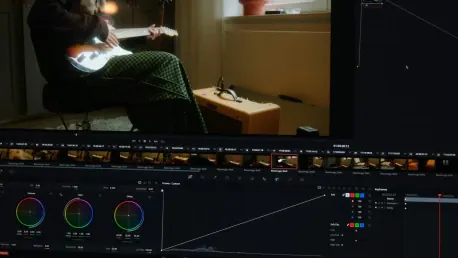A groundbreaking development in the field of artificial intelligence has emerged with the introduction of a new AI model named Pyramid Flow. This innovative model, created by a team of researchers from Peking University, Kuaishou Technology, and Beijing University of Posts and Telecommunications, aims to generate high-resolution (768p) virtual video imagery with remarkable efficiency and cost-effectiveness. By making Pyramid Flow available as open-source software, the developers have opened doors for anyone to use this technology freely, including for commercial applications, without any associated costs.
Pyramid Flow introduces an advanced approach to AI video generation by producing video content through multiple low-resolution stages before arriving at the final high-resolution outcome. This multi-stage process not only significantly reduces the computational power required but also the number of tokens needed, enhancing the model’s overall efficiency. According to the research team, an inference shell using Pyramid Flow is capable of generating a five-second video in just 56 seconds at a resolution of 384p. This efficiency marks a substantial improvement over existing AI models in this domain.
Breakthrough in Multi-Stage Video Generation
The Pyramid Flow model’s efficiency and cost-effectiveness come from its novel multi-stage video generation approach, which has drawn significant attention from the AI research community. By initially working through multiple low-resolution stages before arriving at the high-resolution video, Pyramid Flow manages to minimize computational demands considerably. These stages serve as building blocks that gradually refine the video, allowing the model to use fewer resources while achieving high-quality output. This method revolutionizes the industry by making high-resolution video generation more accessible and scalable without compromising performance.
In recent years, the value of AI video generation models has soared, driven by their potential to create virtual video content for television and movies at much lower costs compared to traditional filming methods. The open-source availability of Pyramid Flow positions it as an invaluable tool for both research and commercial applications. Its cost-effective and efficient nature makes it suitable for a wide range of uses, from independent projects to large-scale commercial ventures. This development could potentially democratize high-resolution video production, allowing smaller entities to compete with established players in the industry.
Experimental Validation and Open-Source Potential
The research team behind Pyramid Flow conducted extensive experiments to demonstrate its effectiveness. Notably, an ablation study was carried out, showcasing the model’s rapid convergence speed, which is crucial for efficient video generation. Their work, supported by an extensive dataset of 10 million short videos, highlights the model’s capability to produce highly realistic video results. The team’s emphasis on the model’s performance underpins its potential to transform virtual video content generation significantly. However, the researchers did not address ongoing disputes regarding the use of open-source databases and potential copyright violations of virtual videos, which remains an area for further exploration.
The detailed findings and code for Pyramid Flow, released under the MIT License, are readily available on GitHub. Interested parties can access this resource, along with sample videos that showcase the model’s impressive performance. This transparent approach allows for greater collaboration and innovation within the AI community. Additionally, the team’s paper on this work is accessible on the arXiv preprint server, providing further insights into the model’s construction and potential applications. The open-source release of Pyramid Flow not only advances the field of AI video generation but also encourages the ethical use and fine-tuning of open-source materials without incurring third-party costs.
Future Implications and Industry Impact
A groundbreaking advancement in artificial intelligence has surfaced with the introduction of Pyramid Flow, a new AI model. Developed by researchers from Peking University, Kuaishou Technology, and Beijing University of Posts and Telecommunications, this innovative model is designed to generate high-resolution (768p) virtual video imagery with exceptional efficiency and cost-effectiveness. By offering Pyramid Flow as open-source software, the developers have enabled anyone to use this cutting-edge technology freely, including for commercial purposes, without any associated costs.
Pyramid Flow revolutionizes AI video generation through a multi-stage process, creating video content in several low-resolution stages before reaching the final high-resolution output. This method not only massively reduces the computational power required but also cuts down on the number of tokens needed, which boosts the model’s overall efficiency. According to the research team, an inference shell running Pyramid Flow can produce a five-second video in just 56 seconds at a resolution of 384p. This level of efficiency is a notable improvement over existing AI models in the field.









